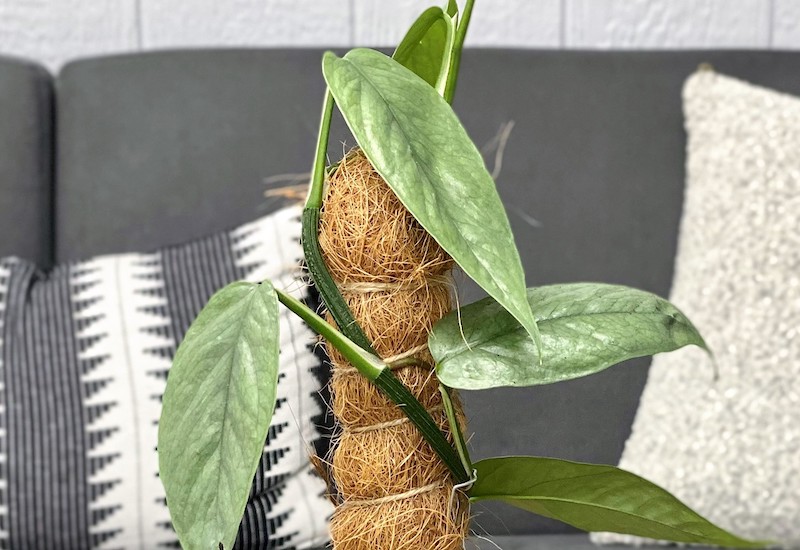Adequate sunlight is one of the primary elements in creating an environment for a thriving houseplant. It is important to learn about the preferred light exposure for the different varieties of houseplants in your home based on each plant’s native habitat. Mimicking its native conditions as much as possible will set your houseplants up for successful growing.

Pothos plants are native to tropical islands in French Polynesia. In their native habitat, they grow as a ground cover and will climb and spread over trees and shrubs in their environment. Being native to the tropical forest floor, they prefer a light spectrum from bright indirect light to moderate or low light. They do not like bright direct light.
Best Rooms To Grow Pothos
It is important to observe what type of light you have throughout your home before purchasing a new plant. South-facing windows tend to provide hot, bright sun. North-facing windows, on the other hand, provide mostly indirect sunlight. Pothos Plants will tolerate a range of light conditions and are therefore one of the easiest houseplants to grow throughout your home or office. They prefer bright indirect light and perform best in an east-facing window. Place them near a window but not too close to protect them from cold temperatures and drafts. Provide your Pothos with adequate space, keeping in mind that pothos love to trail. If given support, like a moss pole, the vines can climb and grow up to 2-3’ from a container.

Monitor your Pothos plant in its new location. Observe the plant’s overall health as it establishes itself. Golden chartreuse varieties of Pothos prefer brighter sun exposure and have been known to revert to solid green if not given enough sunlight. If you have only low light exposure in your home, choose a jade green-colored pothos. If your Pothos plant develops droopy, sagging leaves or begins to revert to an unvariegated or pale green color, the plant may not be receiving sufficient light. If the foliage begins to brown and burn, it may be getting too much light. Using trial and error, you can determine the best location for your Pothos plant.
Providing Supplemental Sunlight To Pothos
Most varieties of Pothos plants will grow in low light conditions. In brighter light, Pothos will grow more vigorously and develop more defined and vibrant variegation. Pothos will not survive without any light, but artificial sunlight can be used to supplement areas with too little light. Ideally, Pothos prefer 12-14 hours a day of indirect light exposure. If you do not have a bright location, you can use LED horticultural lights or even common fluorescent lights in cool white or full spectrum. Grow lights are available at your local garden center or purchased online. You can also use mirrors to reflect sun exposure in dark corners.
Sunlight Needed For Growing Pothos Outdoors
Pothos plants can be naturalized outdoors in warm, tropical climates. They are known to be invasive in some areas because they can trail and climb vigorously and strangle other vegetation. In cooler climates, Pothos will not survive the winter but can be transitioned outdoors in the warmer seasons. Outdoors, Pothos prefers dappled or filtered shade and will not survive in intense direct sunlight. They prefer 12-14 hours of indirect sunlight but will tolerate a shorter period of sunlight outdoors. When moving a Pothos houseplant outdoors, do not move it directly all at once. It is better to gradually adjust the plant to more light over a period of one to two weeks to avoid sunburn. Place the plant under outdoor tables or benches at first, and gradually move the plant into more sunlight day by day. Once acclimated to the outdoors, Pothos plants will develop brighter color and more vigorous growth.
 |
Author Katie Endicott - Published 6-29-2023 |
